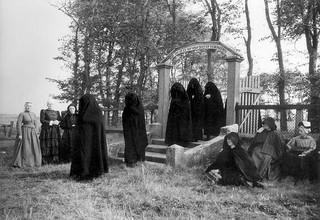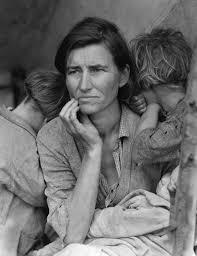Not only are we ringing in a new year, but we are welcoming a new decade! Things like fashion and media have trends, but so does the funeral industry. While traditional embalming and cremation have remained popular throughout the last 50 years every decade has had a myriad of different products and practices. Here is a look back through the decades and the funeral trends that defined them.
1890s
Victorian Era funerals had many customs to be followed. After a loved one passed away, the family would lay them out in the home where they would peacefully lay to be viewed by all. In the opulent Victorian style, flowers were placed around the body to make it look more natural and peaceful. Black fabric tied with white ribbon would be hung on the door to signify that there was a dead body in the home. As a precursor to today’s published obituaries, the Victorians would put a death notice in the newspaper. Funerals were held in the home and then 6-8 pall-bearers would carry the coffin to a horse drawn hearse.
One of the most unique funeral traditions of Victorian funerals were the clothing and mourning practices. Widows would wear a heavy black veil over their faces for a year and black mourning clothing for two years. Widowers would wear black suits, gloves, neckties, and hats for one year. Once the years of mourning have ended, widows and widowers could choose to remain in mourning clothes for the rest of their life, or make the gradual transition into wearing brighter colors and patterns that were fashionable for the time.

Image: Victorian-era.org
1930s
During America’s Great Depression, funerals started to transform from community based funerals into what we would recognize as a traditional funeral today. Since families moved around a lot to look for work and housing, the rural sense of community was lost. Time spent working to provide meant that there wasn’t time to build a coffin for a deceased loved one or be responsible for the body and a home funeral. This also coincided with concerns that dead bodies were a threat to public health. Because of this, funerals were entrusted to an undertaker to provide the sense of a community funeral without the family needing to spend valuable time and resources on it.

Image: Wikipedia Commons
1970s
Funerals in the 1970s looked a lot like traditional funerals we see today, but with some differences in the industry. Cremations started to slowly gain more popularity with the beginning of the 1970s having a 4% rate of cremation that rose to nearly 10% by the 1980s. For people that were choosing not to be cremated, a metal casket was the popular choice, accounting for two-thirds of caskets produced during the decade. Hearses stopped being used as ambulances because standard emergency medical services were put into place. One of the biggest differences in the industry is that almost all funeral homes were independently owned and operated, while nearly 14% are owned by publicly traded corporations today.

Image: Cadillacdatabase.org
2010s
Funerals of the 2010s have been defined by change and innovation. New technologies like aquamation are gaining popularity alongside older traditions like green burials and home funerals. Cremains no longer just go in traditional urns, but are turned into display pieces with sentimental value. There is more emphasis placed on environmentally friendly services than in decades past.
Even with new trends emerging, the traditional side of the funeral industry has also experienced growth. The funeral industry is a 20.7 billion dollar industry and there are an estimated 2.4 million funerals a year in the united states. 41% of Americans are opting for cremations are opposed to burial in a cemetery. With 76 million Americans being older than 60, it’s expected that the funeral industry will continue to grow and change over the decade to come.

Image: Aquamation Info

